Standard parameter
Measurement of standard parameters
The laboratories for environmental analysis at the Suderburg campus are used for ongoing research projects and student teaching, as well as for processing external analysis orders. The laboratory equipment enables employees to determine standard parameters such as pH value, conductivity, COD, NH 4-N, TKN and others. In addition, various laboratory devices are available for elemental and trace analysis to determine PAHs, permanent gases, CHCs, PCBs and aromatics. The laboratory for molecular biology deserves special mention.
Other equipment includes several models of technical systems on a laboratory scale. Tests can be carried out on digested sludge treatment and also sedimentation tests in a sedimentation tank. Furthermore, a laboratory wastewater treatment plant with denitrification stage, oxygen input control and continuous sludge recirculation is available for determining biodegradability.
- Photometer for measuring cuvette tests (HachLange and Macherey&Nagel) with the corresponding digestion blocks

- Kjeldahl digestion block and distillation for the determination of NH 4-N, TKN and NOx
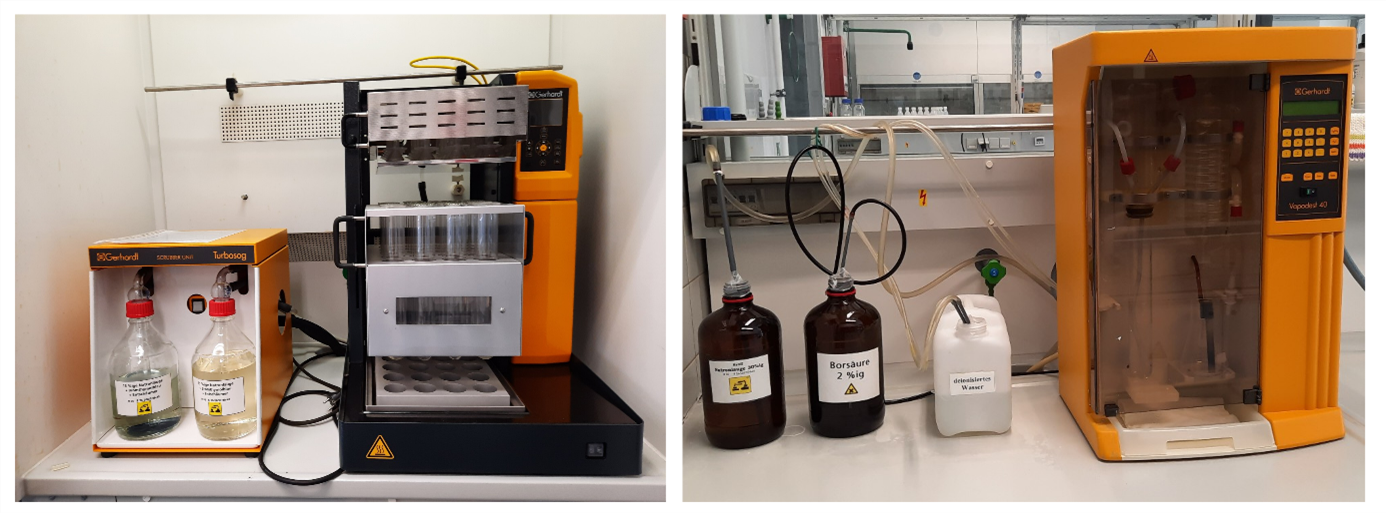
- Element analysis with the AAS Analyst 200 and ICP-OES Optima 8000 devices
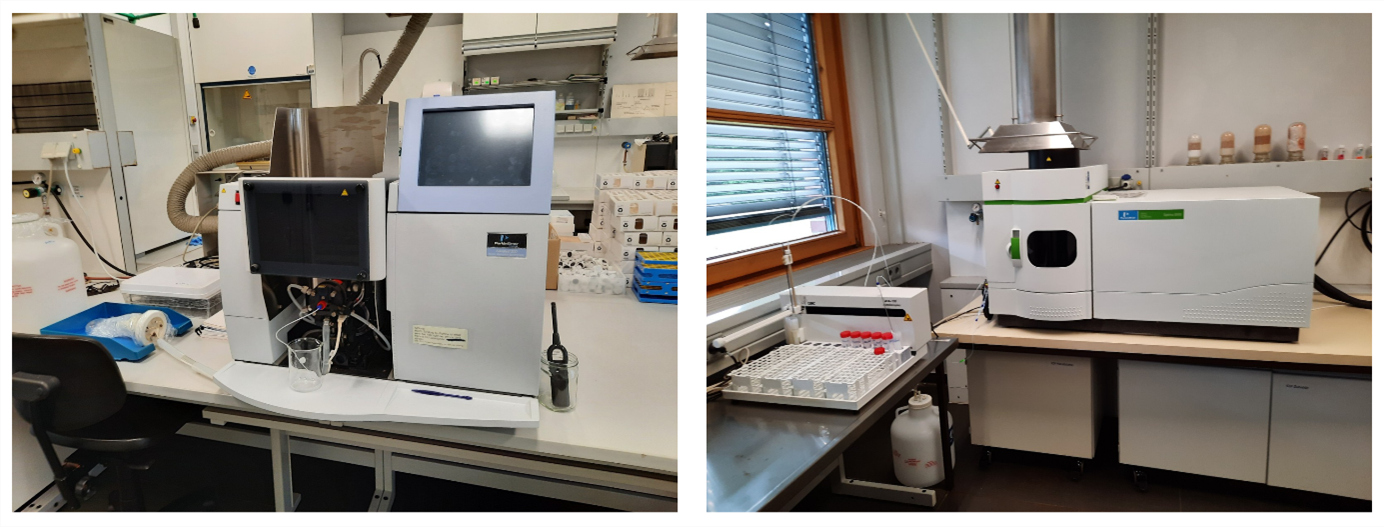
- Various laboratory devices (GC 4 Autosystem with ECD for GC-MS, GC 1 Autosystem XL with ECD, GC 2 Autosystem with FID/WLD, GC 3 Autosystem XL with FID) for the determination of permanent gases, CHCs, PCBs and aromatics
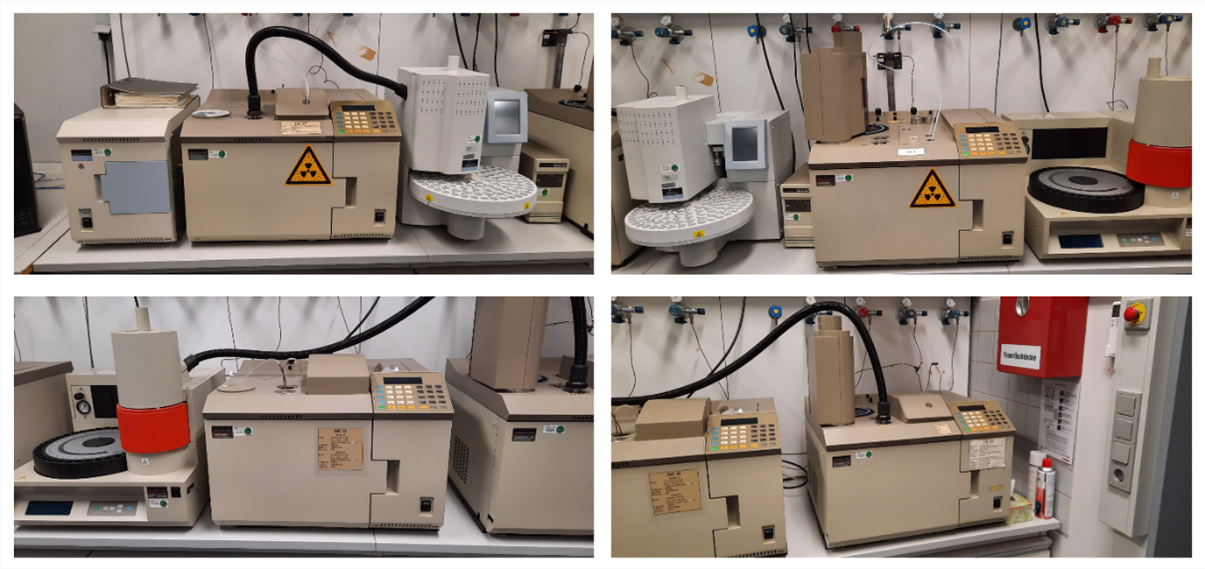
- Rotary evaporator (HB 10, RV 10 digital, RV 10), spectrometer (UV/VIS Lambda 25), ultrapure water system (Barnstead Smart 2 Pure), HPLC (Dionex Ultimate 3000), GC-MS-MS and pyrolysis and ultrasonic bath
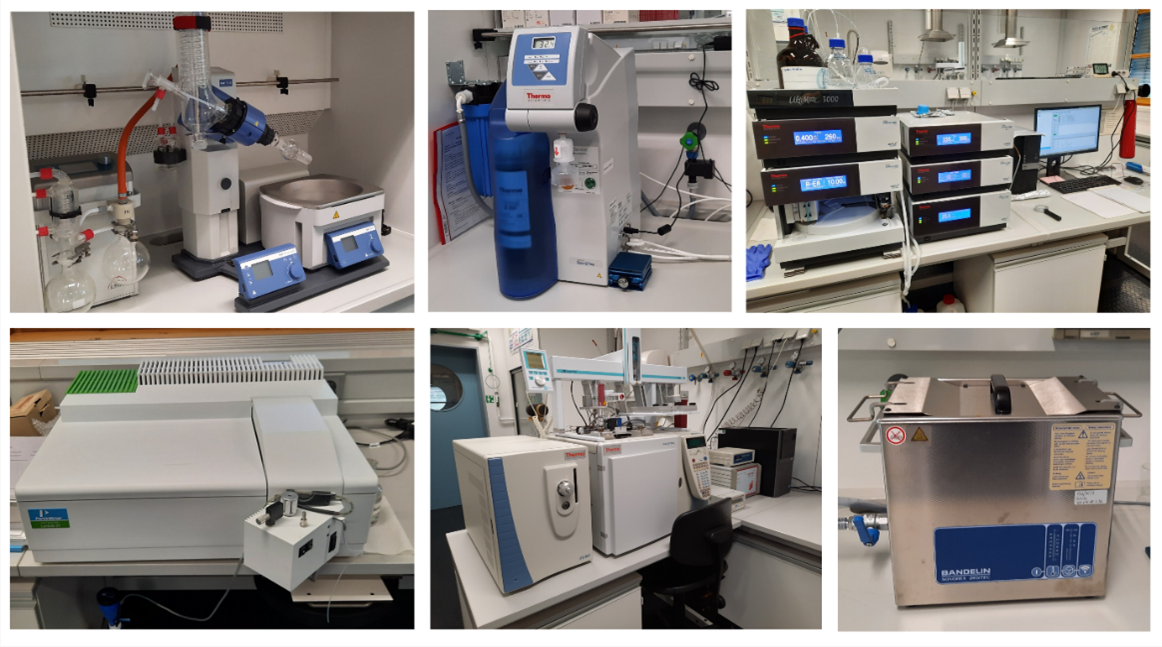



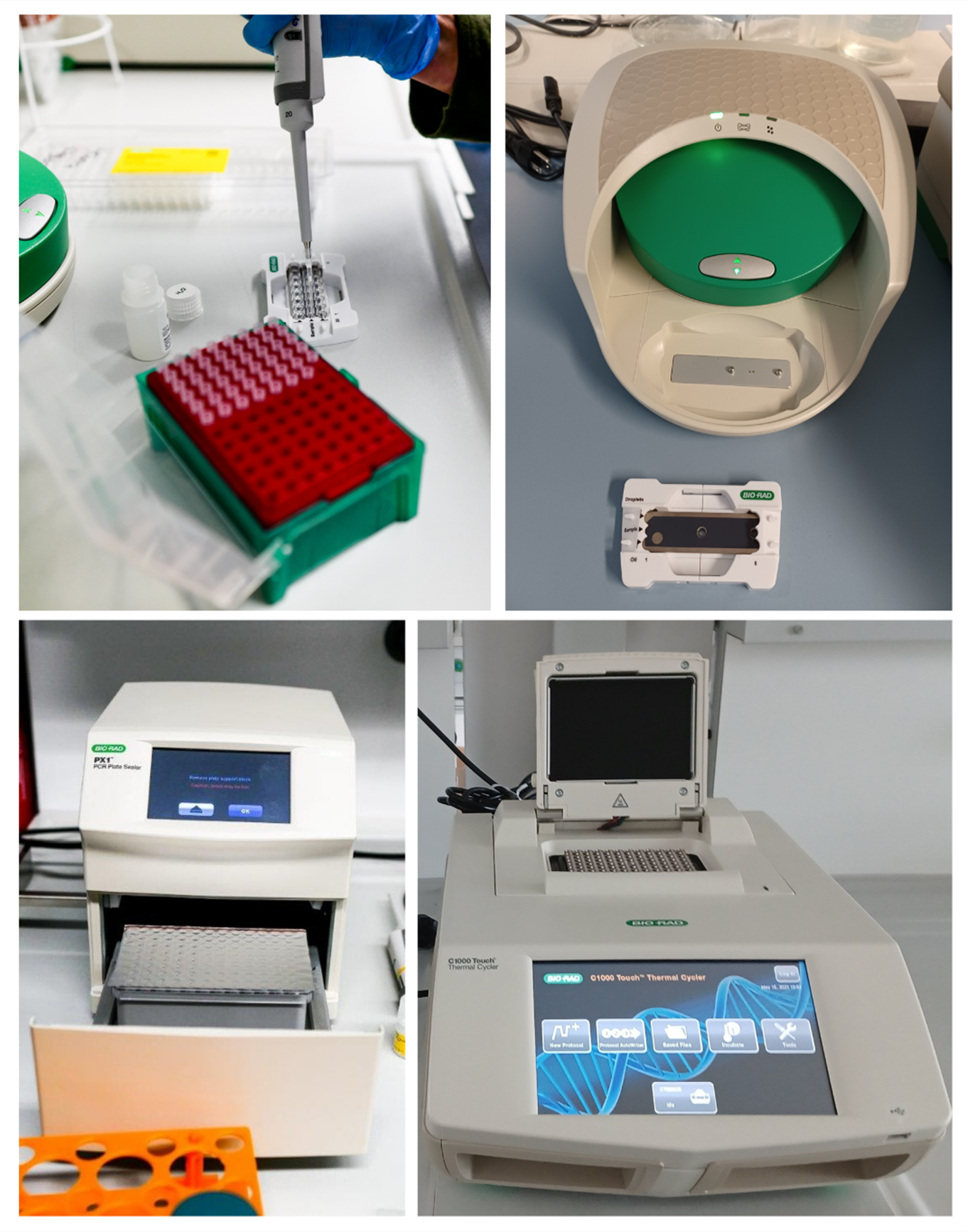
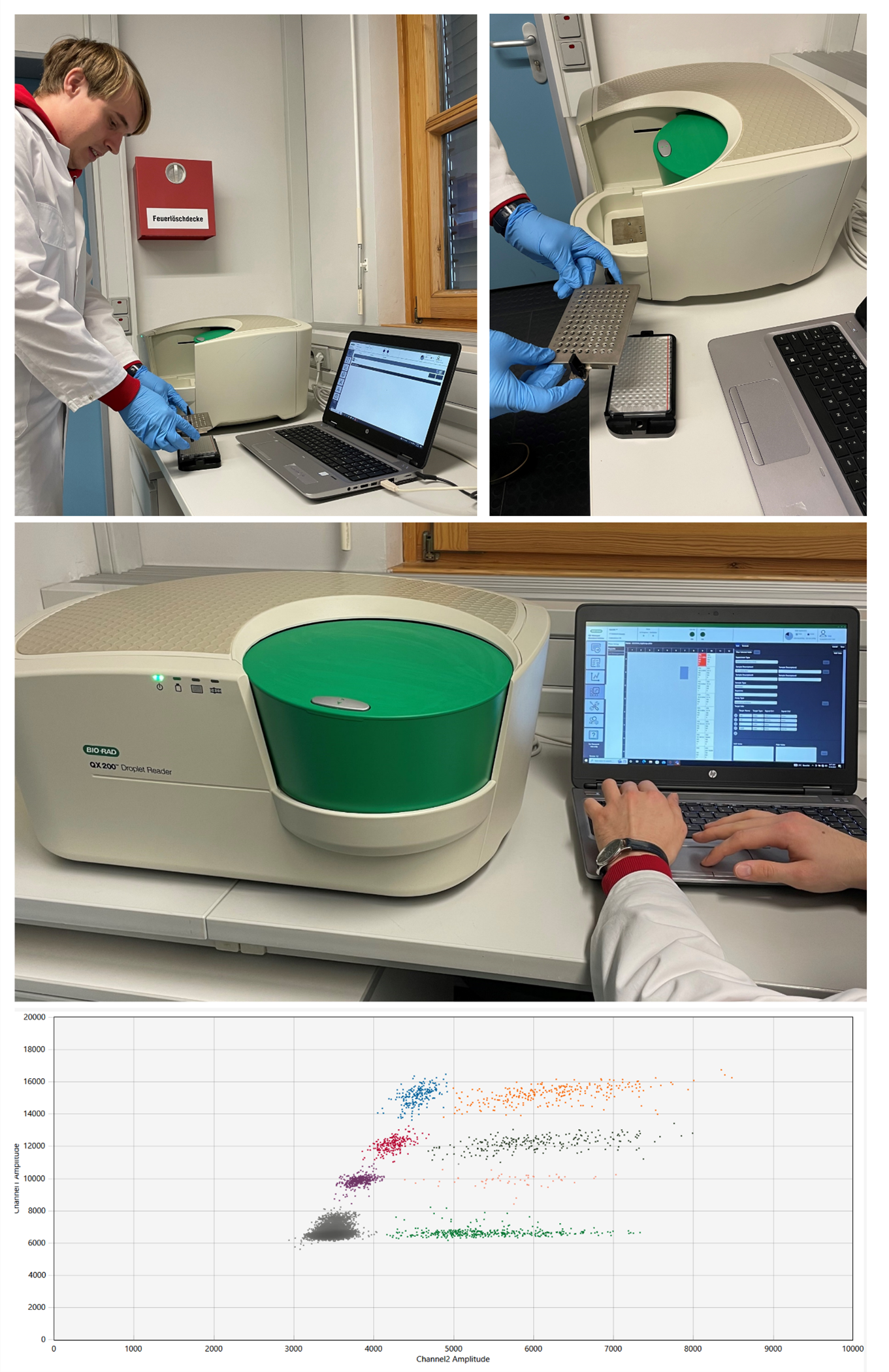 Figure 3: ddPCR
reader from BioRad
Figure 3: ddPCR
reader from BioRad